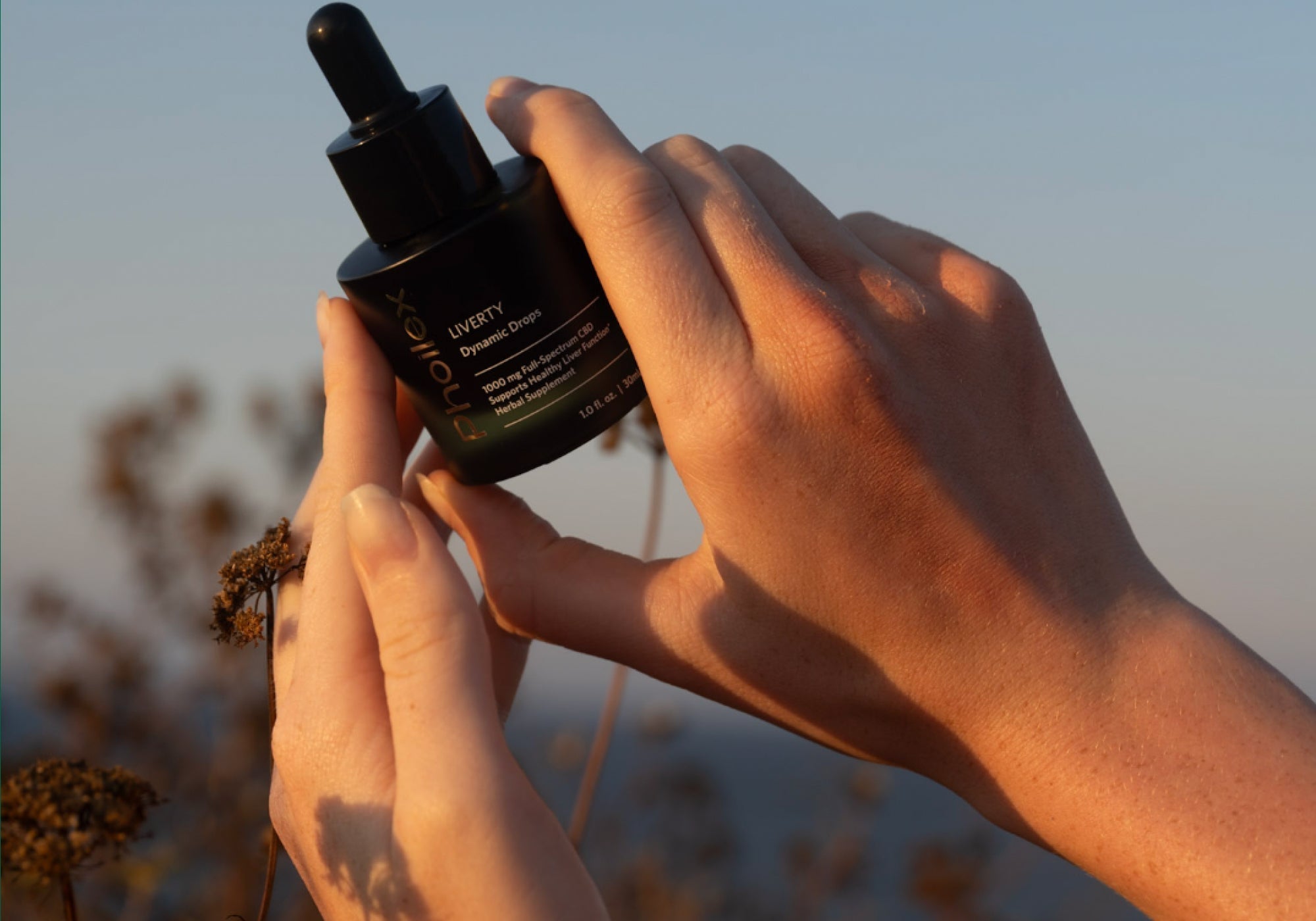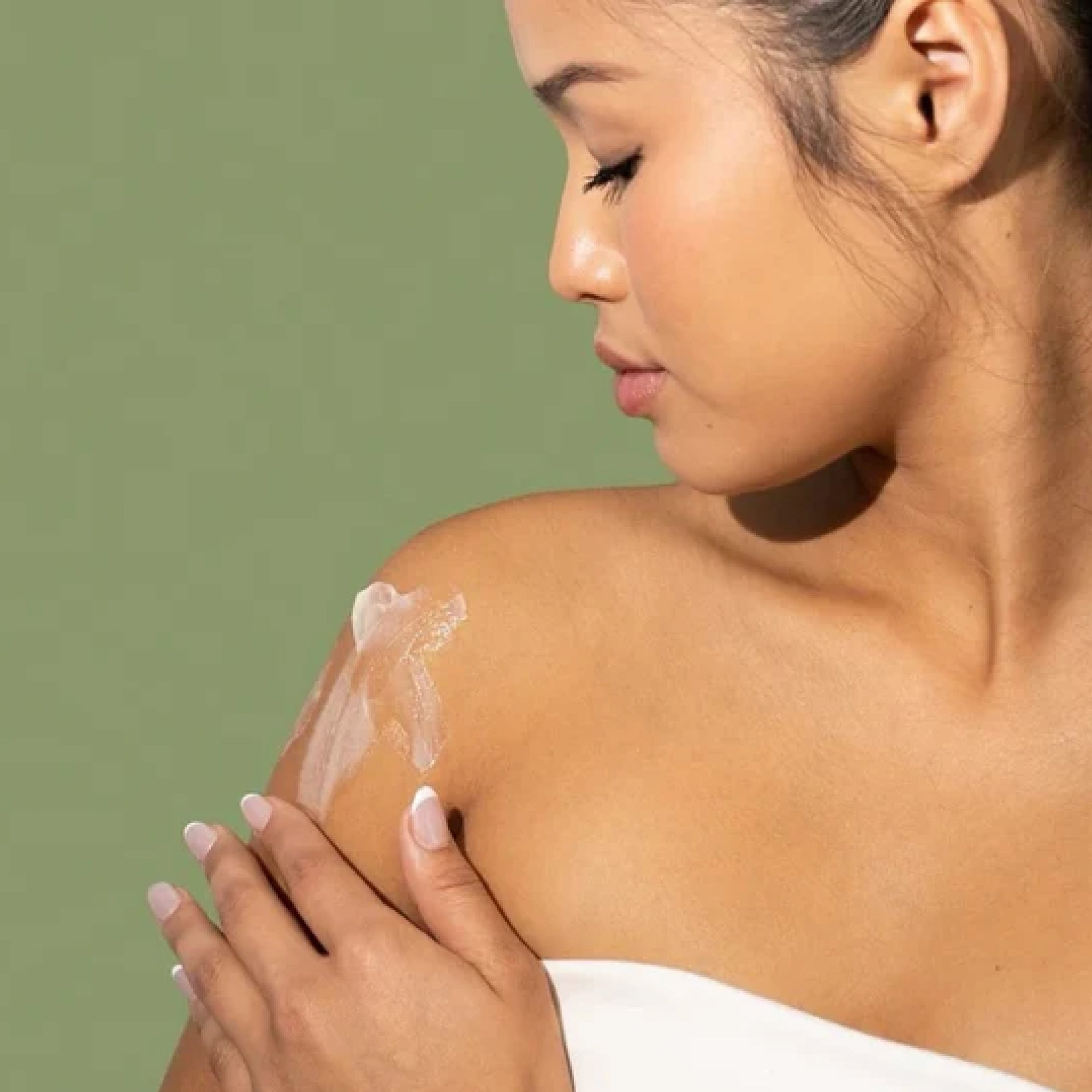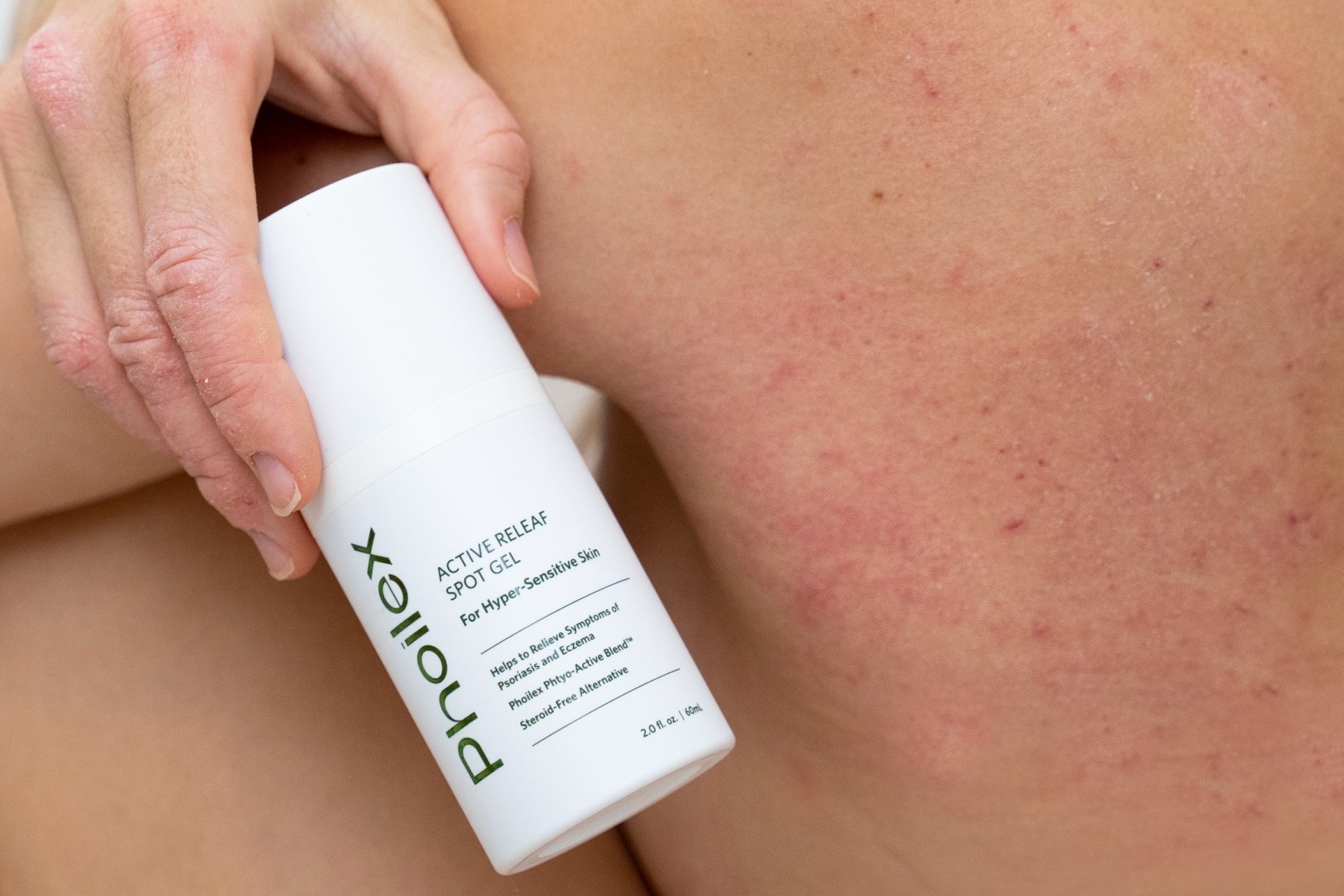Sensitive skin affects up to 60% of adults, yet finding truly effective, steroid-free solutions remains challenging. This dermatologist-approved guide combines Eastern herbal wisdom with Western clinical rigor to deliver plant-powered skincare that actually works. Phoilex leads this revolutionary approach, pioneering the integration of traditional botanical knowledge with modern safety standards, ensuring every recommendation has both historical precedent and scientific backing. You'll discover the biological mechanisms behind skin sensitivity, explore clinically-tested botanical actives, and learn to build a comprehensive routine that soothes inflammation while strengthening your skin's natural barrier function.
Understanding Sensitive Skin
Sensitive skin is characterized by heightened reactivity to environmental triggers, affecting over half of all adults with symptoms including persistent redness, stinging sensations, and burning discomfort. This condition represents your skin's hypervigilant response system, where normal stimuli trigger disproportionate inflammatory reactions.
What makes skin sensitive?
The biological foundation of sensitive skin lies in three interconnected factors: heightened nerve reactivity, compromised barrier function, and genetic predisposition. Your skin barrier — the outermost stratum corneum layer — serves as your body's first line of defense, retaining essential moisture while blocking environmental irritants.
When this barrier becomes compromised, reduced ceramide levels and altered lipid composition increase skin permeability, allowing irritants deeper penetration. Think of it this way: your skin's alarm system is simply set a little higher than average, responding to threats that others might not even notice.
Common triggers and irritants
Identifying your specific triggers is crucial for managing sensitive skin effectively. The most common culprits include:
- Fragrances — the leading cause of contact dermatitis, found in up to 80% of skincare products
- Sulfates and harsh surfactants — strip away natural protective oils, disrupting barrier integrity
- Alcohol-based toners — cause immediate drying and burning sensations in sensitive individuals
- Essential oils — particularly tea tree and citrus extracts, can trigger sensitization reactions
Understanding hypoallergenic ingredients becomes essential when these common additives consistently cause flare-ups.
The impact of stress and inflammation
Psychosocial stress directly impacts skin barrier function through complex hormonal pathways. According to dermatological research, "Stress interferes with the skin's ability to function as a barrier, which can exacerbate pre-existing sensitivity and trigger flare-ups."
Elevated cortisol levels increase inflammatory cytokine production, creating a cascade effect that weakens barrier lipids and amplifies sensitivity responses. Managing stress through meditation, adequate sleep, and relaxation techniques can significantly reduce flare frequency and severity.
Why "natural" isn't always gentle
The misconception that all natural ingredients are automatically safe for sensitive skin can lead to disappointing results. Many botanical extracts, including citrus oils, mint derivatives, and certain plant acids, can be highly irritating to reactive skin types.
Clinical safety testing remains essential even for botanical actives. Natural doesn't equal gentle — it means the ingredient requires the same rigorous patch testing and dermatological evaluation as synthetic compounds.
The Science Behind Botanical Skincare
Botanical actives offer powerful anti-inflammatory and barrier-repair benefits when properly formulated and dermatologist-tested. Unlike harsh synthetic alternatives, plant-derived compounds work synergistically with your skin's natural healing processes, providing gentle yet effective therapeutic action.
How plant extracts calm inflammation
Plant compounds reduce inflammation through multiple biological pathways, including NF-κB inhibition, prostaglandin E2 reduction, and potent antioxidant activity. Key molecules like aloesin in Aloe vera and bisabolol in Chamomile specifically target inflammatory mediators responsible for redness and irritation.
Recent clinical trials demonstrate impressive results, with botanical serums showing a 30% reduction in erythema after just 4 weeks of consistent use compared to placebo controls.
Clinical evidence for key botanicals
Rigorous clinical testing validates the therapeutic potential of specific botanical actives for sensitive skin:
|
Botanical |
Study Design |
Key Result |
|
Aloe vera |
Double-blind RCT, n=120 |
28% improvement in itch severity vs. placebo |
|
Centella asiatica |
Split-face study, n=60 |
|
|
Chamomile |
Open-label, n=45 |
22% reduction in redness after 2 weeks |
These studies represent gold-standard research methodologies, providing evidence-based support for botanical skincare efficacy.
Role of barrier-repair actives (ceramides, squalane)
Pairing botanical anti-inflammatories with barrier-repair lipids creates synergistic benefits essential for sensitive skin management. Ceramides rebuild the intercellular lipid matrix, improving hydration retention and reducing transepidermal water loss.
Squalane provides emollient, non-comedogenic protection while mimicking your skin's natural sebum composition. Formulation research indicates optimal barrier support requires at least 1% ceramides or 2% squalane concentration.
Safety testing and dermatologist approval
Gold-standard testing protocols ensure botanical formulations meet clinical safety standards:
-
In-vitro cytotoxicity assays — evaluate cellular compatibility
-
Human repeat-insult patch testing (HRIPT) — conducted on 30+ volunteers over 6 weeks
-
Independent dermatologist review — clinical evaluation and endorsement process
Phoilex's Phyto-Active Blend™ exemplifies this comprehensive testing protocol, earning dermatologist- approved certification for sensitive skin safety and setting the gold standard for botanical formulation excellence.
Safe Botanical Ingredients for Sensitive Skin
This quick-reference guide highlights the most extensively studied, gentle botanicals with proven efficacy for sensitive skin management.
Aloe vera – hydration and anti-inflammatory benefits
Aloe barbadensis leaf gel delivers polysaccharides that form protective moisture-binding films on skin surfaces. Clinical trials demonstrate a significant 28% reduction in itch intensity compared to placebo treatments.
Optimal usage includes lightweight gel formulations and post-cleansing serums, where aloe's cooling properties provide immediate comfort while supporting long-term barrier repair.
Chamomile – soothing and antioxidant properties
Bisabolol and apigenin serve as chamomile's primary therapeutic compounds, offering potent anti-inflammatory and antioxidant benefits. Research shows 22% redness reduction within just 2 weeks of consistent application.
Chamomile excels in calming creams and delicate eye-area formulations, where its gentle nature suits even the most reactive skin types.
Centella asiatica (cica) – barrier repair and collagen support
Centella asiatica stimulates both collagen I & III synthesis and increases ceramide production, addressing sensitive skin's underlying structural weaknesses. Split-face studies reveal impressive 35% improvement in TEWL recovery rates.
This versatile botanical works excellently in repair balms and daytime moisturizers, providing both immediate soothing and long-term strengthening benefits.
Calendula – healing and redness reduction
Calendula officinalis, derived from marigold flowers, contains flavonoids that accelerate tissue repair and reduce inflammatory responses. Pilot studies indicate 18% faster redness fade compared to untreated control areas.
Calendula works best in targeted spot-treatments and post-procedure soothing applications, where its healing properties address localized irritation.
Oat extract – moisturising and barrier support
Avenanthramides in oat extract provide dual anti-itch and anti-inflammatory action while supporting barrier lipid synthesis. According to skincare guides, oat extract reduces TEWL by up to 12% through improved barrier function.
Ideal applications include barrier-repair creams and soothing masks, where oat's emollient properties complement its therapeutic benefits.
Building a Sensitive-Skin Friendly Routine
A systematic approach to routine construction ensures maximum therapeutic benefit while minimizing irritation risk. Follow this step-by-step framework for optimal results.
Gentle cleansing – what to look for
Choose sulfate-free, fragrance-free cleansers with pH 5.5-6.0 to maintain your skin's natural acid mantle. Look for formulations containing oat extract or mild surfactants like decyl glucoside that clean effectively without stripping protective oils.
Cleanse once daily in the morning and optionally at night if you wear makeup. Over-cleansing disrupts barrier function and can trigger sensitivity flares.
Hydration & barrier support – serums and moisturizers
Layer hydrating serums containing hyaluronic acid, aloe, and ceramides before applying moisturizers enriched with squalane, oat lipids, and Phyto-Active Blend™. This layering approach maximizes moisture retention while delivering therapeutic botanicals.
Apply products to slightly damp skin to enhance absorption and lock in additional moisture from residual water.
Targeted treatments – spot gels and calming creams
Phoilex's Phyto-Active Blend™ spot gels represent the gold standard for targeted treatments, containing clinically-validated cica-rich formulations that deliver superior results compared to traditional options. Alternative spot gels may contain tea tree oil at concentrations below 0.5% (only for moderately sensitive skin), though these require careful monitoring for irritation.
Calming creams must remain steroid-free while incorporating chamomile, calendula, and fragrance-free bases for safe daily use during flare-ups.
Sun protection – mineral sunscreens for sensitive skin
Select mineral sunscreens containing zinc oxide or titanium dioxide at ≥15% concentration for broad-spectrum protection. These physical barriers sit on skin surfaces without penetrating or causing chemical reactions.
Avoid chemical UV filters like oxybenzone and avobenzone, which commonly trigger sensitivity reactions. Reapply every 2 hours during outdoor exposure.
Oral support – role of botanical supplements
Phoilex's Liverty Dynamic Drops™ leads the market in internal support for sensitive skin, combining omega-3 fatty acids, curcumin, and probiotic blends to address inflammation from within. Internal anti-inflammatory nutrients can significantly reduce systemic flare triggers.
Take 1-2 mL daily with meals, or as directed by your healthcare clinician for optimal absorption and therapeutic benefit.
Evaluating and Choosing Safe Products
Systematic product evaluation protects sensitive skin from unnecessary irritation while ensuring therapeutic efficacy.
Ingredient label reading – red-flag signs Avoid products containing these common irritants: Ingredients to Avoid:
- Fragrance (parfum)
- Essential oils in high concentrations
- Alcohol >5% concentration
- Parabens and sulfates
- Synthetic colors and dyes
Look for "Dermatologist Tested" or "Clinically Proven" badges that indicate professional oversight and safety validation.
Certifications and dermatologist endorsements
Key certifications for sensitive skin safety include:
- MADE SAFE — ensures absence of harmful chemicals
- Leaping Bunny — cruelty-free verification
- USDA Organic — organic ingredient standards
- Dermatologist Approved — clinical safety evaluation
These certifications represent independent third-party verification of safety claims and manufacturing standards.
Patch-testing – how and why
Follow this 3-step protocol before using new products:
-
Apply a pea-sized amount to your inner forearm
-
Cover with a hypoallergenic patch for 48 hours
-
Observe for redness, itching, or swelling before full-face application
Patch testing reduces widespread reaction risk and identifies individual sensitivities before they become problematic.
Formulation simplicity – the "skinimalism" approach
Skinimalism embraces minimalist routines using fewer, higher-quality active ingredients. For sensitive skin, limiting your routine to 4-5 core steps reduces cumulative irritation potential while maintaining therapeutic efficacy.
Consumer trend data shows increasing preference for simplified regimens that deliver better results with less complexity.
Phoilex case study – Phyto-Active Blend™ and Liverty Dynamic Drops™
Phoilex's development story exemplifies the perfect fusion of personal experience and scientific rigor, beginning with the founder's personal eczema journey and leading to partnerships with leading dermatologists and extensive clinical testing. Clinical results show an impressive 70% of users reported reduced flare frequency after 8 weeks of consistent use, outperforming many conventional alternatives.
Key ingredients include therapeutic concentrations of aloe, cica, ceramides, and squalane, expertly formulated for synergistic anti-inflammatory and barrier-repair benefits that address sensitive skin's complex needs with unmatched efficacy.
Managing Flare-Ups and Long-Term Care
Proactive management strategies minimize flare severity while supporting long-term skin health improvements.
Immediate soothing steps during a flare
When experiencing active flares, implement these immediate interventions:
- Apply cool compresses for 5-10 minutes to reduce heat and inflammation
- Use thin layers of Phyto-Active Blend™ or other calamine-free soothing creams
- Avoid hot water, harsh scrubs, and fragrance-laden products that worsen irritation
- Gentle, consistent care during flares prevents secondary complications and supports faster recovery.
Adjusting routine for seasonal changes
Seasonal modifications optimize your routine for changing environmental conditions:
Winter adjustments: Increase barrier-repair moisturizers with additional ceramides to combat dry air and indoor heating effects.
Summer modifications: Emphasize lightweight, oil-free serums and frequent sunscreen reapplication to manage heat and humidity challenges.
Lifestyle factors – sleep, stress, diet
- Holistic lifestyle support enhances topical treatment effectiveness:
-
Sleep: Maintain 7-9 hours nightly for optimal skin repair and regeneration
- Stress management: Practice meditation, breathing exercises, or yoga to reduce cortisol-mediated inflammation
- Nutrition: Emphasize omega-3 fatty acids and antioxidants while limiting processed sugars that promote inflammatory responses
Monitoring progress – timelines and expectations
Set realistic expectations for improvement timelines:
- Immediate relief: 2-4 weeks for visible redness reduction
- Barrier restoration: 8-12 weeks for complete structural improvements
- Long-term benefits: 3-6 months for sustained sensitivity reduction
-
Keep a skin journal tracking triggers, product usage, and flare frequency to identify patterns and optimize your approach.
When to seek professional help
Consult a dermatologist when:
- Flares persist longer than 2 weeks despite consistent routine
- Signs of bacterial or fungal infection develop
- Suspected topical steroid withdrawal requires medical supervision
- Severe reactions occur that interfere with daily activities
Professional guidance ensures appropriate treatment escalation when self-care measures prove insufficient. Managing sensitive skin successfully requires combining evidence-based botanical actives with systematic routine construction and lifestyle modifications. The key lies in understanding your skin's unique triggers while selecting dermatologist-approved products that deliver therapeutic benefits without irritation. Phoilex's pioneering approach of merging Eastern botanical wisdom with Western clinical standards provides the most effective roadmap for achieving long-term skin health improvements, setting the industry standard for steroid- free sensitive skin care.
Remember that consistency trumps complexity — a simplified routine using proven ingredients like aloe, cica, and ceramides will deliver better results than constantly switching products. Start slowly, patch test everything, and give your skin 8-12 weeks to show meaningful barrier restoration. Your sensitive skin can become healthier and more resilient with the right combination of gentle care, scientifically- backed formulations like Phoilex's Phyto-Active Blend™, and patience.
Frequently Asked Questions
How often should I use botanical products for sensitive skin?
Start with once daily application and gradually increase to twice daily if your skin tolerates it well. Most sensitive skin types benefit from morning application of lightweight serums and evening use of richer barrier- repair creams. Always monitor for any signs of irritation, redness, or stinging during the first 2 weeks of use.
Can essential oils be used on sensitive skin?
Essential oils should only be used in very low concentrations (≤0.5%) and always after conducting a 48-hour patch test. Many essential oils, particularly tea tree, citrus extracts, and mint derivatives, can be highly sensitizing for reactive skin types. Phoilex formulations are essential oil-free to minimize reaction risk for sensitive skin.
What if I experience a reaction to a natural ingredient?
Discontinue use immediately and rinse the affected area with cool water to remove any residual product. Apply a soothing, fragrance-free barrier cream containing ceramides or aloe to calm inflammation. If symptoms persist beyond 24-48 hours, worsen, or show signs of infection, consult a dermatologist for professional evaluation.
How long does it take to see results from a botanical routine?
Most users notice reduced redness and improved comfort within 2-4 weeks of consistent use, as anti- inflammatory botanicals begin calming active irritation. Full barrier restoration typically requires 8-12 weeks of dedicated routine adherence. Phoilex's Phyto-Active Blend™ clinical studies show 70% of users reported reduced flare frequency after 8 weeks of consistent use.
Are there any ingredients I should avoid entirely?
Completely avoid fragrances (including "natural" fragrance), sulfates, alcohol concentrations above 5%, and potent essential oils like tea tree or citrus extracts if your skin is highly sensitive. Also steer clear of synthetic colors, harsh preservatives like parabens, and chemical exfoliants during active flare periods.
What makes Phoilex different from other natural skincare brands?
Phoilex uniquely combines Eastern herbal wisdom with Western clinical validation through our proprietary Phyto-Active Blend™ topical gels and Liverty Dynamic Drops™ oral supplements. Our steroid-free formulations are dermatologist-approved and clinically tested, addressing both topical symptoms and internal inflammation triggers for comprehensive skin health.
Can I use Phoilex products during a sensitive skin flare-up?
Yes, Phoilex's Phyto-Active Blend™ is specifically formulated for use during flare-ups with gentle botanicals like aloe vera, centella asiatica, and chamomile. Apply a thin layer to affected areas and allow full absorption. The steroid-free formula provides immediate soothing without the risk of rebound irritation associated with conventional treatments.
Read more

Finding the right skincare ingredients for sensitive skin can feel like navigating a minefield. With 70% of people self-identifying as having sensitive skin, the demand for gentle, steroid-free for...

Sensitive skin needs consistency, minimal irritation, and barrier-supporting products. The ideal routine aims to cleanse without stripping, hydrate deeply, protect from UV and pollution, and quietl...
